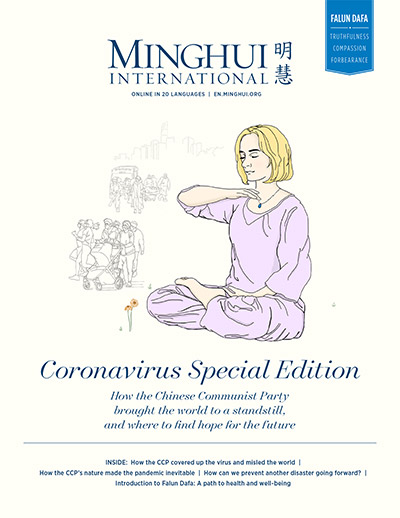July 29, 2000
 |  |  |
Friends of the Swastika
Should the swastika be rehabilitated? For centuries it stood for good luck. Above, for instance, Jacqueline Bouvier wore one as a young girl.
It's a simple question: Can the swastika ever be redeemed?
Before the Nazi party adopted the swastika and turned it into the most potent icon of racial hatred, it traveled the world as a good luck symbol. It was known in France, Germany, Britain, Scandinavia, China, Japan, India and the United States. Buddha's footprints were said to be swastikas.
Navajo blankets were woven with swastikas. Synagogues in North Africa, Palestine and Hartford were built with swastika mosaics.
Now there is a small movement afoot to help "the swastika get on with its benign life," to separate it from "the sins of the Nazis." Is that really possible? Should it be possible?
The swastika gets its name from the Sanskrit word svastika, meaning well-being and good fortune.
The earliest known swastikas date from 2500 or 3000 B.C. in India and in Central Asia.
A 1933 study suggests that the swastika migrated from India across Persia and Asia Minor to Greece, then to Italy and on to Germany, probably in the first millennium B.C.
The fateful link was made by the German archaeologist Heinrich Schliemann. From 1871 to 1875, Schliemann excavated the site of Homer's Troy on the shores of the Dardanelles. When he found artifacts with swastikas, he quickly associated them with the swastikas he had seen near the Oder River in Germany. As Steven Heller, the art director of The New York Times Book Review, writes in "The Swastika: Symbol Beyond Redemption," "Schliemann presumed that the swastika was a religious symbol of his German ancestors which linked ancient Teutons, Homeric Greeks and Vedic India."
Pretty soon swastikas were everywhere, rotating both clockwise and counterclockwise. Madame Blavatsky, the founder of the Theosophical Society, included the swastika in the seal of the society. "Rudyard Kipling combined a swastika with his signature in a circle as a personal logo," Mr. Heller reports. And the swastika was part of the logo of the Bauhaus, under Paul Klee.
The swastika spread to the United States, too. Coca-Cola issued a swastika pendant. Carlsberg beer etched swastikas onto its bottles. During World War I, the American 45th Infantry division wore an orange swastika as a shoulder patch. At least one train line had swastikas on its cars.
The Girls' Club published a magazine called The Swastika. And until 1940 the Boy Scouts gave out a swastika badge.
How did the Nazis get hold of it? According to Mr. Heller, the Germanen order, an anti-Semitic group that wore helmets with Wotan horns and plotted "against Jewish elements in German life," used a curved swastika on a cross as its insignia. By 1914, the Wandervogel, a militarist German youth movement, made it a nationalist emblem.
The Nazi party claimed it around 1920. In "Mein Kampf," Hitler, who had artistic aspirations as well as political ones, described "his quest to find the perfect symbol for the party." He toyed with the idea of using swastikas. But it was Friedrich Krohn, a dentist from Starnberg, who designed the flag with a black swastika in its center. "Hitler's major contribution," Mr. Heller writes, "was to reverse the direction of the swastika" so that it appears to spin clockwise.
The swastika came down as quickly as it ascended. In 1946 it was constitutionally banned from any public display in Germany. In the United States there has never been a law prohibiting the display of swastikas, but the aversion is still there.
The question now is, should the swastika be reclaimed from the Nazis or should it, as Mr. Heller argues, continue to represent their "unspeakable crimes"?
The issue is complicated by the swastika's history in India and other parts of Asia, where it has none of the connotations it has in the West. In India there is Swastik soap; in Malaysia, a Swastika photograph studio; in Japan there are Pokémon cards that have "manji," counterclockwise swastikas; in China, the Falun Gong uses the counterclockwise swastika as its emblem.
And now swastikas have crept back into sight in the Western world.
In the 1960's, for example, the swastika was a recurring motif in geometric abstract art and hard-edge painting, notably in an exhibition at the Guggenheim Museum.
But the most concerted effort to redeem the swastika comes from Friends of the Swastika, a group formed in 1985 and based in the United States. The group, whose Web site promises that it "has no connections to any racist propaganda" and no intention of denying the Holocaust, is led by an artist named ManWoman who claims to have 200 swastikas tattooed on his body. In order to "detoxify" and "resanctify" the swastika, the group sells T-shirts, stamps, postcards and "other cool stuff" with swastikas. Their watchword is, "To hell with Hitler!"
And already, they say, their mission is working. "The swastika is re-emerging in the alternative pop culture . . . in the punk rock world, in the flying saucer cults, in the street gangs." There are teenagers wearing swastikas just because they think they look cool.
"In the 1973 film 'Sleeper,' " Mr. Heller notes, "Woody Allen sarcastically predicted that in the distant future, the swastika will be worn as a fashion accessory." The distant future is now.
It has become an icon of rebellion. The logo for ZZ Flex skateboards looks a lot like a swastika. The label on the heavy metal CD Sacred Reich has interlocking swastikas. The logo for the band Kiss, which originally had three Jewish members, was made to look just like the insignia of the SS -- not quite a swastika but rather two parallel, jagged s's made to look like lightning.
Does it matter whether people use a swastika in ignorance, in hatred or to rehabilitate it? No, Mr. Heller says: "Nazi icons were strong enough to seduce a nation and still contain a graphic power that can be unleashed today." The swastika defenders counter with the question: "How can a symbol be guilty for the acts of a madman?"
(http://www.nytimes.com/library/arts/072900tank-swastika.html)
Category: Perspective








